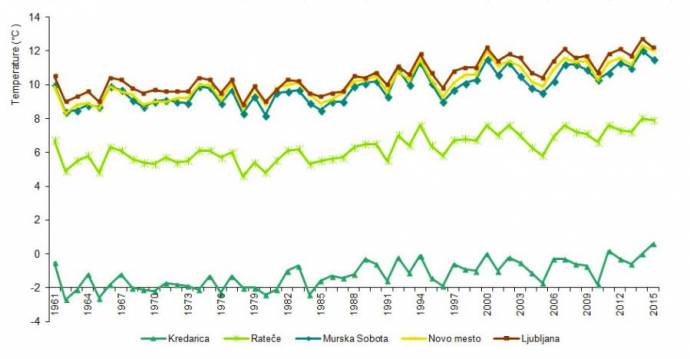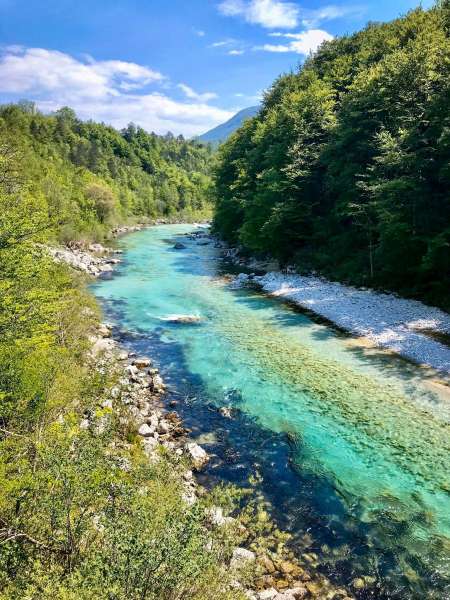STA, March 5, 2018 – The air temperature in Slovenia has risen by 2 degrees Celsius over the past 50 years, the number of heat waves has increased and periods of heavy rain have become more frequent, show data released by the Slovenian Environment Agency (ARSO).
As part of Slovenia's Climate Change project, the agency monitored climate from 1961 to 2011, analysing average air temperatures, the amount of precipitation, snow cover and solar exposure. More than 300 meteorological stations around the country were included in the study.
Average air temperatures have been increasing over the past decades in all times of the year, but especially in summer and spring.
In these two seasons, the country's temperature increased by an average 2 degrees, meteorologist Gregor Vertačnik said at a news conference in Ljubljana.
However, winters are also becoming warmer, which means less extreme cold, according to Vertačnik.
He explained that temperature change in winter is harder to measure because individual winters are more diverse temperature-wise than summers.
If temperatures differ by one degree from one summer to another, winters can differ by several degrees, so the difference between cold and the warmest winters can be an average 10 degrees.
No major change in average air temperature has been recorded for autumn.
With warmer summers come also more, and longer, heat waves. While 35 degrees used to be rare in the past, it is now recorded every other year or even every year.
However, higher temperatures also bring more frequent and longer periods of heavy precipitation, although no change was recorded in autumns, explained Vertačnik.
As for solar exposure, the meteorologist said that summers and springs were becoming sunnier, while little change has been detected in winter.
In the 1961-2011 period, Slovenia's solar exposure at the annual level increased by up to 40 hours per decade.
Snow cover has been getting thinner in most parts of the country, dropping by 10-20% per decade.
There was twice as much snow in the 1960s and 1970s then the country got over the past two decades.
Vertačnik also highlighted this winters as one of the most interesting ones, having recorded one of the coldest periods in 20 years.
While December was perhaps too warm and rich in precipitation, it was followed by one of the warmest Januaries so far, but the weather changed in February.
Practically the entire country has been covered in snow since the beginning of February, and there were some extremely low temperatures, although no records were broken.







